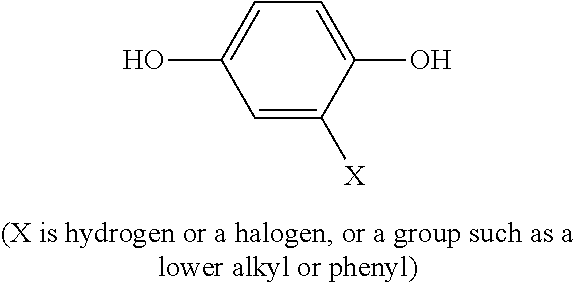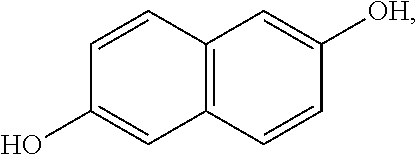Method for producing metal-clad laminate, and metal-clad laminate
a metal-clad laminate and metal-clad technology, applied in the direction of metal layered products, data processing applications, thermoplastic polymer dielectrics, etc., can solve the problems of insufficient solution and insufficient adhesion strength of metal sheets and thermoplastic liquid crystal polymer films, and achieve excellent adhesion strength and inhibit blister generation. , the effect of high frequency characteristics
- Summary
- Abstract
- Description
- Claims
- Application Information
AI Technical Summary
Benefits of technology
Problems solved by technology
Method used
Image
Examples
reference example 1
[0125](1) A thermotropic liquid polyester of 27 mol % 6-hydroxy-2-naphthoic acid unit and 73 mol % p-hydroxybenzoic acid unit was melted and kneaded at 280 to 300° C. using a single axis extruder, and extruded from an inflation die with 40 mm in diameter and a slit interval of 0.6 mm to obtain a thermoplastic liquid crystal polymer film 2 with 50 μm in thickness. The melting point Tm and the heat deformation temperature Tdef of this film were 282° C. and 230° C., respectively.
example 1
[0126]The thermoplastic liquid crystal polymer film 2 obtained in Reference Example 1 and electrolytic copper foil (ten-point average roughness (Rz): 0.9 μm) with 12 μm in thickness as the metal sheet 3 were used. As shown in FIG. 2, a resin-coated metal roll (“SUPER TENPEX” produced by YURI ROLL MACHINE, CO., LTD., with resin thickness of 1.7 cm) was used as the roll 8 in contact with the thermoplastic liquid crystal polymer film 2. The thermoplastic liquid crystal polymer film 2 was arranged on the side of the resin-coated metal roll 8, and the electrolytic copper foil was arranged on the opposite side thereof. Both of the diameters of the metal roll 9 and the resin-coated metal roll 8 were 40 cm. The surface temperature of the metal roll 9 was set to a temperature 20° C. lower than the melting point of the thermoplastic liquid crystal polymer film 2. The pressure applied to the thermoplastic liquid crystal polymer film 2 and the electrolytic copper foil 3 between rolls was 120 kg...
PUM
| Property | Measurement | Unit |
|---|---|---|
| average roughness | aaaaa | aaaaa |
| average roughness | aaaaa | aaaaa |
| temperature | aaaaa | aaaaa |
Abstract
Description
Claims
Application Information
 Login to View More
Login to View More - R&D
- Intellectual Property
- Life Sciences
- Materials
- Tech Scout
- Unparalleled Data Quality
- Higher Quality Content
- 60% Fewer Hallucinations
Browse by: Latest US Patents, China's latest patents, Technical Efficacy Thesaurus, Application Domain, Technology Topic, Popular Technical Reports.
© 2025 PatSnap. All rights reserved.Legal|Privacy policy|Modern Slavery Act Transparency Statement|Sitemap|About US| Contact US: help@patsnap.com



